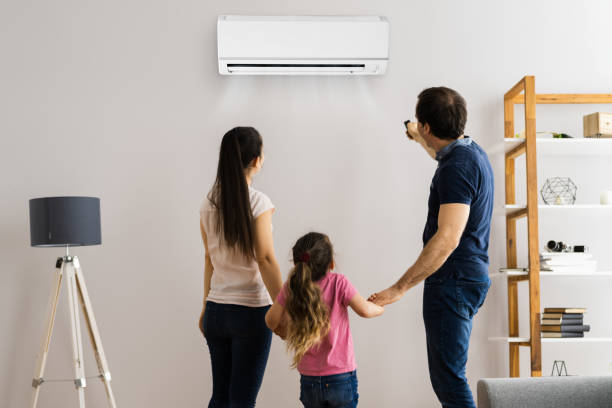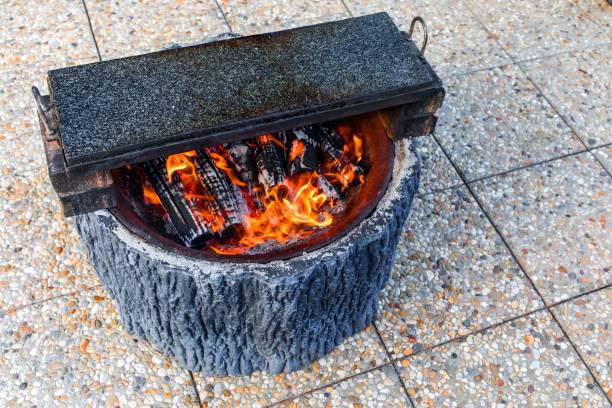Air quality is one of the key factors in achieving a healthier lifestyle at home. You can imagine how important indoor air quality is for the average person who spends 90 percent of their time inside.
Roman Poet Virgil said 2,000 years ago, “The greatest asset is health.” Many things have changed throughout the years, but some remain the same.
We will learn today about indoor air quality and how to improve it.
What is good air quality?
Air quality index values (AQIs) are classified into six categories according to US Environmental Protection Agency standards:
What is good air? Air quality under 50 is considered good and poses minimal health risks. Anything over 300 is deemed dangerous, and it is likely that the entire population will be affected by serious health problems.
You can use this air quality index to find out how the air is in your area.
Indoor Air Pollution – Why Should You Care?
Take a look below at some statistics about indoor air pollution that will help you understand the importance of maintaining a healthy home air quality.
In 2019, 2,3 million deaths worldwide have been attributed to indoor pollution.
Each year, 6,7 million premature deaths can be attributed to ambient and household air pollutants.
Indoor air pollution is responsible for 44% of pneumonia deaths among children younger than five years.
These statistics are grim, but there is some light at the end of the tunnel. Here are ways to prevent the negative effects of poor air quality.
Find out how to improve indoor air quality at home:
Your indoor air quality is entirely up to you. To understand how you can improve indoor air quality, it is important to identify the common sources of air pollution.
Tobacco Smoke. Tobacco smoke or secondhand smoke is one of the most harmful indoor pollutants. It causes more than 480,000 deaths each year. Smoke from cigarettes contains over 70 carcinogens and about 7,000 chemicals detrimental to health. Tobacco smoke is one of the easiest ways to reduce pollution. You can improve both your health and the air quality if you quit smoking.
Cleaning Products. When you clean your house, the goal is to improve your overall living environment and eliminate dust. Unfortunately, many products, such as air fresheners and cleaning agents, can cause indoor pollution because they release volatile organic compounds. VOCs are known to cause nausea, headaches, and irritation of the nose, eyes, throat, or eyelids. In some cases, they can even lead to cancer. Your best option is to search for non-toxic cleaners.
Natural Gas. The use of natural gas stoves can also cause indoor air pollution. Gas stoves can emit harmful pollutants such as formaldehyde and carbon monoxide, which can have negative health effects. A report from 1992 also shows that children who live in homes with gas stoves are 20% more likely than other kids to suffer respiratory illness.
Pet dander. Pet owners know it’s impossible to eliminate all pet hair and dander. Pet dander can be microscopic and stay in the air for long periods. It will then stick to your furniture, bedding, and other household items. To combat pet dander, vacuum thoroughly and regularly and use an air cleaner.
It is important to have good indoor ventilation for good quality air. This airflow removes indoor pollutants and allows fresh air to enter from the outside.
Ventilate your home daily by opening windows and doors and installing fans in humid areas.
If the air outside has an AQI of 150 or more, it’s unhealthy.
Natural Cleaning Products
Some cleaning products, as we have already mentioned, can cause more harm than benefit. Whenever possible, use natural cleaning products to maintain a healthy air environment. Surface cleaning products and laundry care products are also included.
Every time you clean your house, try to remove unnecessary items. It will free up space and reduce dust hiding places, allowing you to breathe cleaner air.
Smoking indoors is not allowed.
Stopping smoking is the best thing you can do for your health. However, you can still do your part by avoiding smoking indoors. If you’re wondering how to improve the air quality in your home, this is the easiest solution.
If you live with someone who is a smoker, talk to them about it and set some rules so they don’t smoke in the house. Secondhand smoke or passive smoking can be just as harmful as smoking yourself. It is essential to achieve healthier living at home.
Get an Air Purifier
Do air purifiers enhance health? Yes, they do. Imagine an air purifier like a cheat code in a video game—it gives you access to a new level of air quality.
Air purifiers can not only improve your air quality but also remove 99.9% of harmful air molecules, such as viruses and bacteria. EnviroKlenz air filters, in particular, ensure that you breathe fresh air at home, work, and everywhere else. EnviroKlenz’s safe earth mineral technology captures and neutralizes airborne contaminants, odors, and other pollutants. This locks in bad air and releases pure, clean air.
Houseplants to Grow
Did you know that indoor plants can improve the quality of air? They can absorb carbon dioxide and remove volatile organic compounds from the air.
These are the top air-purifying plants.
Barberton Daisy
English Ivy
Snake Plant (Mother-in-law’s Tongue)
Scarlet Star Bromeliad
Relying on only houseplants to purify the air, eliminate harmful particles, and help you live a healthier life at home is not enough. Indoor plants should be used in conjunction with air purifiers to get the best results.
Bonus tip: Control temperature and humidity
Most people only consider temperature and humidity as comfort indicators. However, both can impact indoor air quality and, therefore, our health.
Ideal room temperatures vary depending on the climate and the individual but are generally between 68 and 72 degrees Fahrenheit (20 and 22 degrees Celsius).
According to the EPA, indoor humidity levels should never exceed 60%.
Some chemical reactions accelerate when temperature and humidity levels are too high. This leads to a higher production of ozone and other dangerous compounds.
If the temperature inside is too low, the air can become very dry, resulting in a low level of indoor humidity. This can lead to problems such as dry skin, stale indoor air, and an increased concentration of air pollutants like dust, pollen, and mold.
You should maintain a balance between humidity and temperature to prevent low air quality and its negative effects. An IAQ monitor can monitor your indoor air quality. It will give you readings of your current air quality and notify you when humidity, temperature, or pollutants exceed healthy levels.
The conclusion of the article is
Following the right guidelines can help you achieve a healthy lifestyle at home. These include using eco-friendly cleaning products and air purifiers.
The effort will be worth it, as your health is always the most important thing. Good air quality also plays an important role in living a healthier lifestyle. Start today to breathe better tomorrow.



